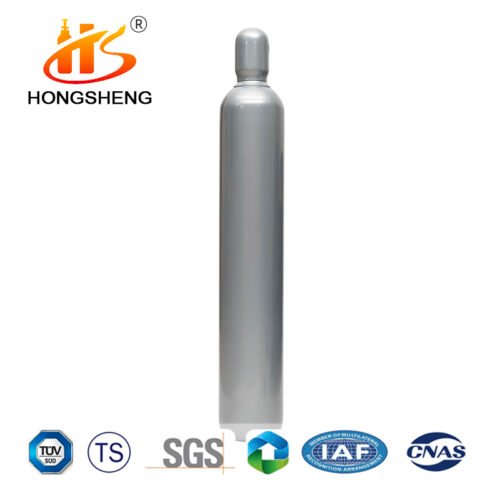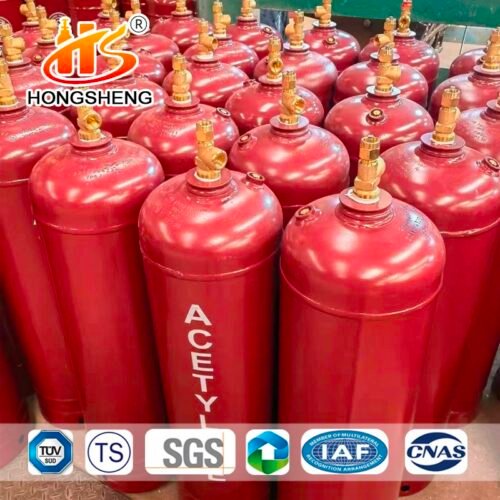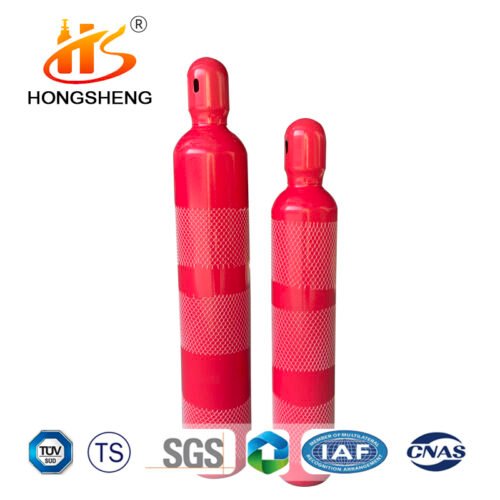What is the difference between acetylene cylinders and other compressed gases?
Compressed gases are mainly divided into three types: liquefied, gaseous and dissolved. Acetylene is one of the most commonly used dissolved gases today. Due to its chemical instability, it can even decompose at room temperature if it is higher than 15 PSIG.

Thus, acetylene is compressed into a cylinder with an inert porous material made of calcium silicate. The substance is saturated with acetone to help absorb acetylene. As acetylene gas is introduced into the cylinder, it slowly dissolves into acetone, easily absorbing up to eight times as much acetylene as it would without acetone.
Typically, compressed acetylene cylinders are designed to feature the following material in a given proportion:
1. Porous quality: 10%
2. Acetylene gas: 34%
3、Acetone: 42%
4、Saturated gas: 1%
5. Free volume: 13%
This combination allows acetylene to be stored in cylinders at high pressure without risk of decomposition or explosion. To ensure safety during normal use, it is recommended to keep the gas system pressure at a maximum of 15 PSIG.
 ‘
‘
Small Oxy Gas Tanks And Oxygen Acetylene Gas Bottles
| Type | Outside
Diameter (mm) |
Water
Capacity (L) |
Bottle
Height (mm) |
Weight
(kg) |
Working
pressure (Bar) |
Design wall
thickness (mm) |
Material
Grades |
| WMⅡ108-2.0L-150 | 108 | 2 | 310 | 3.62 | 150 | 2.9 | 37MN |
| WMⅡ108-5.0L-150 | 108 | 5.0 | 696 | 7.74 | 150 | 2.9 | 37MN |
| WMⅡ140-4.0L-150 | 140 | 4.0 | 375 | 5.89 | 150 | 3.8 | 37MN |
| WMⅡ140-5.0L-150 | 140 | 5.0 | 447 | 6.96 | 150 | 3.8 | 37MN |
| WMⅡ140-8.0L-150 | 140 | 8.0 | 665 | 9.68 | 150 | 3.8 | 37MN |
| WMⅡ140-10.0L-150 | 140 | 10.0 | 818 | 11.9 | 150 | 3.8 | 37MN |
| WMⅡ159-8.0L-150 | 159 | 8.0 | 548 | 9.11 | 150 | 4.3 | 37MN |
| WMⅡ159-10.0L-150 | 159 | 10.0 | 660 | 10.9 | 150 | 4.3 | 37MN |
| WMⅡ159-12.0L-150 | 159 | 12.0 | 780 | 13.1 | 150 | 4.3 | 37MN |
| WMⅡ159-15.0L-150 | 159 | 15.0 | 932 | 16.8 | 150 | 4.3 | 37MN |
| WMⅡ180-20.0L-150 | 180 | 20.0 | 1012 | 24.8 | 150 | 4.9 | 37MN |

























